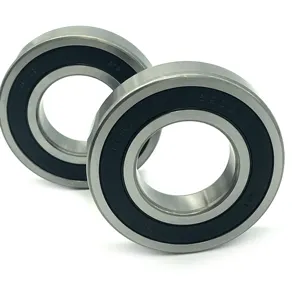Exploring Ball Joint Bearings
Ball joint bearings are pivotal components in various mechanical systems, providing a point of articulation between two parts. These bearings facilitate smooth movement and transfer of forces while accommodating misalignments. The ball and socket bearing design is a common example, offering a wide range of motion in different axes.
Types and Applications
The diversity of ball joints and bearings caters to numerous applications. From small ball joint rod ends used in delicate instruments to heavy-duty rod end ball joints in construction machinery, each type serves a specific function. In automotive systems, cv joint ball bearings are essential for transmitting power through variable angles in front-wheel and all-wheel drive vehicles. Similarly, spherical bearing ball joints are integral in suspension and steering systems, allowing for smooth and responsive vehicle handling.
Features and Materials
The construction of a ball joint bearing typically involves a durable outer housing and a smooth, hardened bearing surface. Materials range from stainless steel to engineered polymers, each selected for its unique properties like load capacity, wear resistance, and environmental resilience. The ball rod end design, for instance, often incorporates a Teflon liner to reduce friction and extend the bearing's lifespan.
Advantages of Ball Joint Bearings
Utilizing ball joint rod end bearings in machinery offers several advantages. Their design allows for angular misalignment correction, which is crucial in applications where precision alignment is difficult to maintain. Moreover, the joint rod end configuration can simplify assembly processes, as it can be easily attached to control rods and steering links.
Selection Considerations
When selecting a ball joint swivel bearing, it's important to consider the load capacity, range of motion, and environmental factors that the bearing will be exposed to. For specialized applications, female rod end ball joints or 5 16 rod end ball joints might be preferred for their specific dimensions and fitting requirements.
Conclusion
In conclusion, the ball joint bearing is a versatile and essential component in countless mechanical systems. Its various forms, such as the 6mm ball joint rod end or the track rod end ball, ensure that there is a suitable bearing for virtually any application. When choosing the right bearing, it's crucial to analyze the application's demands to ensure optimal performance and longevity.



































 浙公网安备 33010002000092号
浙公网安备 33010002000092号 浙B2-20120091-4
浙B2-20120091-4